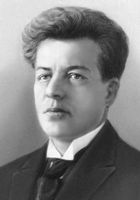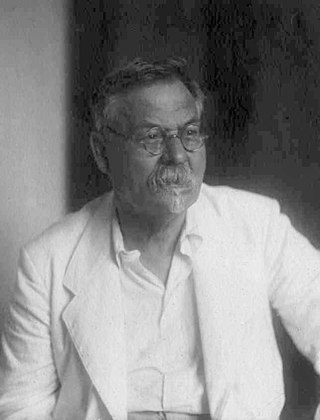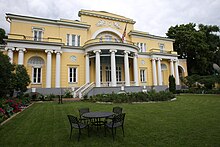
Semyon Alekseyevich Lavochkin was a Soviet aerospace engineer, Soviet aircraft designer who founded the Lavochkin aircraft design bureau. Many of his fighter designs were produced in large numbers for Soviet forces during World War II.

The Bauman Moscow State Technical University, sometimes colloquially referred as the Bauman School or Baumanka (Бауманка), is a public technical university (polytechnic) located in Moscow, Russia. Bauman University offers B.S., M.S & PhD degrees in various engineering fields and applied sciences. In 2023, US News & World Report ranked it #1,758 in the world.

Vladimir Sergeyevich Lisin is a Russian billionaire businessman. He is the chairman and majority shareholder of Novolipetsk (NLMK), one of the four largest steel companies in Russia.

The House of Demidov also Demidoff and Dimidov, was a prominent Russian noble family during the 18th and 19th centuries. Originating in the city of Tula in the 17th century, the Demidovs found success through metal products, and were entered into the European nobility by Peter the Great. Their descendants became among the most influential merchants and earliest industrialists in the Russian Empire. At their peak, they were estimated to have had a net worth of around $300 billion and to be the second-richest family in Russia, behind only the Russian Imperial Family. The Demidov family scattered to America and to Italy and other European countries as a result of the February Revolution of 1917.

Nikolay Pavlovich Okhlopkov was a Soviet and Russian stage and film actor and theatre director who patterned his work after Meyerhold. He was named a People's Artist of the USSR in 1948.

Pyotr Lazarevich Voykov was a Ukrainian Bolshevik revolutionary and Soviet diplomat known as one of the participants in the decision to murder the former Russian Emperor Nicholas II and his family members.

Suleyman Abusaidovich Kerimov is a Russia-based billionaire, oligarch, and politician of Lezgian origin. Kerimov has close ties to Vladimir Putin's government in Russia, as well as Ramzan Kadyrov, the Chechen leader.

The Kirov Plant, Kirov Factory or Leningrad Kirov Plant (LKZ) is a major Russian mechanical engineering and agricultural machinery manufacturing plant in St. Petersburg, Russia. It was established in 1789, then moved to its present site in 1801 as a foundry for cannonballs. The Kirov Plant is sometimes confused with another Leningrad heavy weapons manufacturer, Factory No. 185 . Recently the main production of the company is Kirovets heavy tractors.

Alexander Yevgenievich Lebedev is a Russian businessman, and has been referred to as one of the Russian oligarchs. Until 1992, he was an officer in the First Chief Directorate of the Soviet Union′s KGB and later one of the KGB's successor-agencies, Russia's Foreign Intelligence Service (SVR).

Spaso House is a listed Neoclassical Revival building at No. 10 Spasopeskovskaya Square in Moscow. It was originally built in 1913 as the mansion of the textile industrialist Nikolay Vtorov. Since 1933, it has been the residence of the U.S. Ambassador to the Soviet Union, and since 1991, to the Russian Federation. The building belonged to the USSR and later Russia and, under the 1985 lease contract, the U.S. was supposed to pay 72,500 Soviet roubles per year, which by 2001 was the equivalent of about $3, which the U.S. had failed to pay in 1993. In 2004, the two sides concluded a new 49-year lease that was said to be based on a joint assessment of the property's value; the rent rate was not disclosed.

Mikhail Artemyevich Muravyov was a Russian officer who changed sides during the time of the Civil War in Russia and the Soviet-Ukrainian war.

Ivan Sergeyevich Kuznetsov was a Russian architect primarily known for his pre-1917 works in Moscow and Vichuga. Born into a working-class family, Kuznetsov independently broke into the elite architecture society of Moscow. He worked in many different styles but was most successful in Neoclassical architecture and Russian Revival. He excelled in industrial architecture and designed more than 600 buildings through the commissions of Nikolay Vtorov. Kuznetsov remained in high demand during the Soviet period.

The Russian census identified that there were more than 5,864,000 Ukrainians living in Russia in 2015, representing over 4.01% of the total population of the Russian Federation and comprising the eighth-largest ethnic group. On 2022 February there were roughly 2.8 million Ukrainians who fled to Russia.

Nikolay Aleksandrovich Alekseyev was the elected mayor of Moscow in 1885–1893. Alekseyev is credited with construction of the city's first sanitation system, the first pressurized water supply network reaching individual houses, a psychiatric hospital and 30 new public schools. Alekseyev reorganized the city finances, significantly increasing the share of non-tax revenue from city-owned commercial ventures, and was known for unorthodox and successful fundraising campaigns for the municipal charities. Alekseyev was a long-time sponsor of Moscow Conservatory and local musicians; during his tenure the city acquired the Tretyakov Gallery.

The Embassy of the United States of America in Moscow is the diplomatic mission of the United States of America in the Russian Federation. The current embassy compound is in the Presnensky District of Moscow, across the street from the White House and near the Moscow Zoo.

Guyana–Russia relations are the bilateral relations between the Russian Federation and Guyana. Officially established in 1970, Russia has an embassy in Georgetown, and Guyana's non-resident ambassador to Russia is located in London.

Nikolay Alexandrovich Milyutin, alternatively transliterated as Miliutin was a Russian trade union and Bolshevik activist, participant in the October Revolution in Petrograd and Soviet statesman and architect. After the revolution Milyutin held various executive appointments in Soviet Russia related to social security, urban and central planning and finance; reaching that of Commissar of Finance of the RSFSR in 1924–1929. Milyutin is, however, remembered as an urban planner and an amateur architect, author of Sotsgorod concept, and as the editor of Sovetskaya arkhitektura magazine in 1931–1934.

Ulyanovsk, known as Simbirsk until 1924, is a city and the administrative center of Ulyanovsk Oblast, Russia, located on the Volga River 705 kilometers (438 mi) east of Moscow. Ulyanovsk has been the only Russian UNESCO City of Literature since 2015.

Alexei Fedorovich Turchaninov was a business magnate in the Russian Empire, grandfather of Pavel and Dmitry Solomirsky, the member of the wealthy Turchaninov family.

Pyotr Petrovich Vtorov was a Soviet scientist biogeographer, ecologist, zoologist and nature conservation activist. He founded a new direction of scientific research called Synthetic Biogeography, and developed a scientific concept for the creation of reference areas of the biosphere. He was an author of textbooks, a guide to birds, scientific and popular books.





















